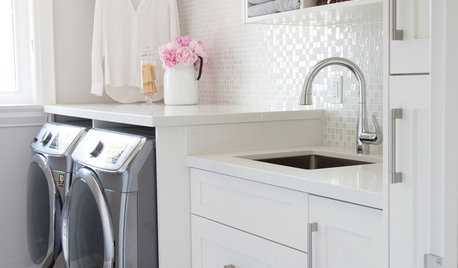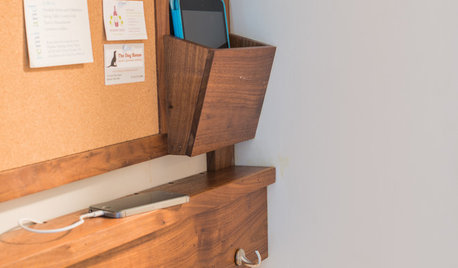Shouldn't do rotor and spray head on same zone... but....
glenn_russell
12 years ago
Related Stories

LAUNDRY ROOMSYou Have Style — Shouldn’t Your Laundry Room?
Make folding clothes your favorite chore of the day with these 10 designer tips
Full Story
GARDENING AND LANDSCAPING10 Great Outdoor Chill Zones
Whether you have a huge poolside deck or a sliver of a patio, these ideas will kick stress to the curb all summer long
Full Story
THE HARDWORKING HOMEA New Drop Zone Keeps the Clutter at Bay
The Hardworking Home: A clever wall-mounted station for keys, phones and more helps a family stay organized
Full Story
DECORATING GUIDES10 Easy Fixes for That Nearly Perfect House You Want to Buy
Find out the common flaws that shouldn’t be deal-breakers — and a few that should give you pause
Full Story
MOST POPULAR5 Remodels That Make Good Resale Value Sense — and 5 That Don’t
Find out which projects offer the best return on your investment dollars
Full Story
GARDENING GUIDESWhat’s in a Name? See 6 Wildflowers That Aren’t ‘Weeds’ at All
Dispel the stereotypes of weeds and try these wildlife-supporting native wildflowers in your garden
Full Story
GARDENING GUIDESDon’t Let These Excuses Keep You From Gardening
Stop blaming your lack of experience, space, time and funds, and get on with the joy of garden making
Full Story
FURNITUREHow to Keep Your Upholstery Looking Good
You wouldn't expect your car to maintain itself. Show your sofa and chairs the same courtesy with this 3-part strategy
Full Story
LIFESimple Pleasures: Put On Your Slippers
Preserve the peace and protect your floors and carpets by turning your home into a no-shoes zone
Full Story
SMALL KITCHENS12 Genius Design Moves for Small Kitchens
These space-enhancing tricks can make compact cooking zones look and feel larger
Full StoryMore Discussions







mike1059
lehua49
Related Professionals
Beverly Hills Landscape Contractors · Coram Landscape Contractors · Davidson Landscape Contractors · Fort Worth Landscape Contractors · Fridley Landscape Contractors · Fuquay-Varina Landscape Contractors · Norwalk Landscape Contractors · Panama City Beach Landscape Contractors · Plainview Landscape Contractors · Salmon Creek Landscape Contractors · Watertown Landscape Contractors · Weslaco Landscape Contractors · Oxon Hill Landscape Contractors · Suisun City Landscape Contractors · Syosset Solar Energy Systemsglenn_russellOriginal Author
mike1059
glenn_russellOriginal Author
mike1059
glenn_russellOriginal Author
mike1059
glenn_russellOriginal Author
mike1059
glenn_russellOriginal Author